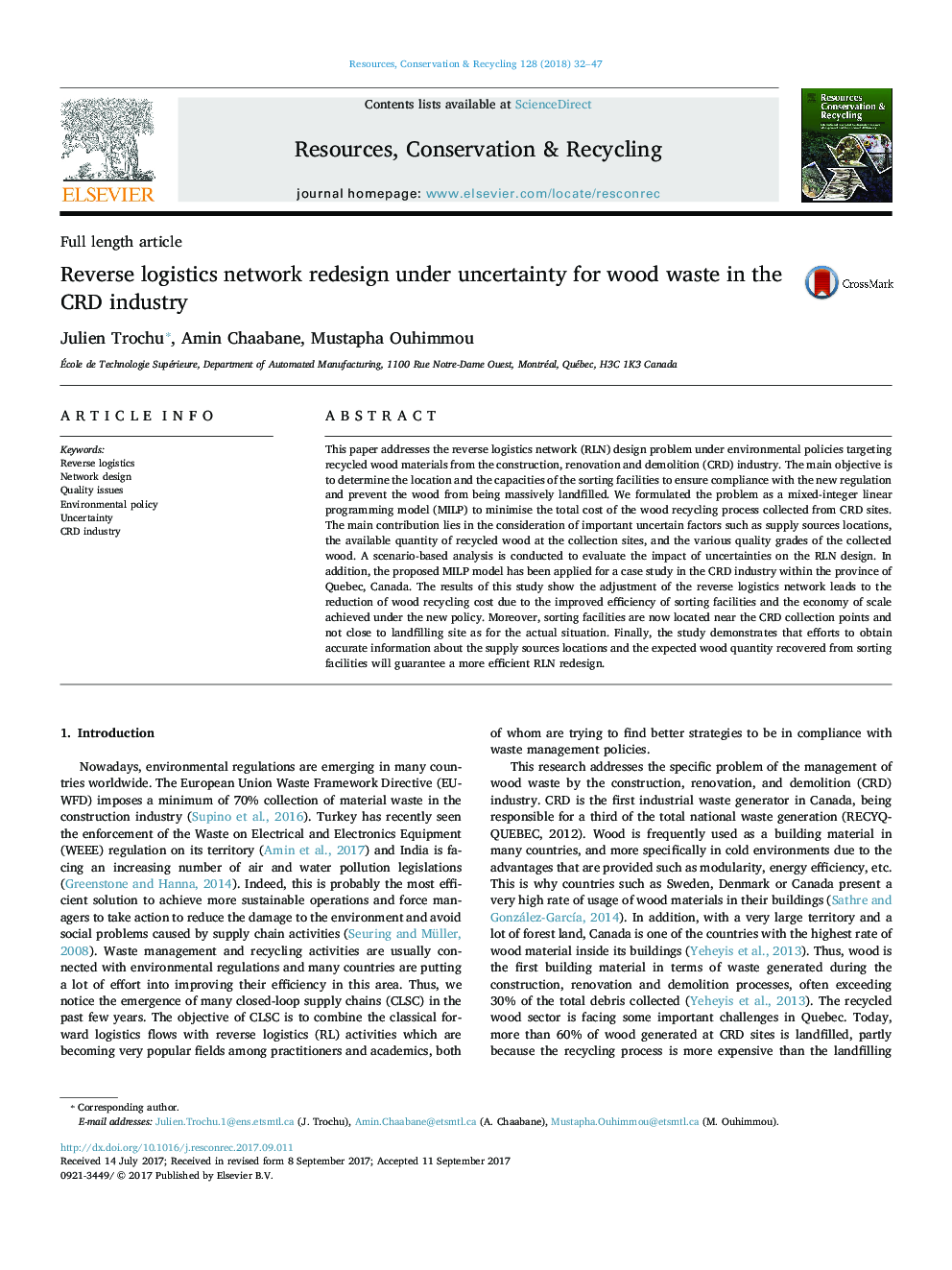| کد مقاله | کد نشریه | سال انتشار | مقاله انگلیسی | نسخه تمام متن |
|---|---|---|---|---|
| 5118708 | 1485664 | 2018 | 16 صفحه PDF | دانلود رایگان |

- A mixed-integer linear program for reverse logistics network design is proposed.
- The network is under an environmental policy targeting the recycled wood material.
- Our work presents a case study in the construction industry in Quebec, Canada.
- A scenario-based approach is used to analyse the effect of uncertainty on the network.
- Accurate information is necessary to redesign an efficient reverse logistics network.
This paper addresses the reverse logistics network (RLN) design problem under environmental policies targeting recycled wood materials from the construction, renovation and demolition (CRD) industry. The main objective is to determine the location and the capacities of the sorting facilities to ensure compliance with the new regulation and prevent the wood from being massively landfilled. We formulated the problem as a mixed-integer linear programming model (MILP) to minimise the total cost of the wood recycling process collected from CRD sites. The main contribution lies in the consideration of important uncertain factors such as supply sources locations, the available quantity of recycled wood at the collection sites, and the various quality grades of the collected wood. A scenario-based analysis is conducted to evaluate the impact of uncertainties on the RLN design. In addition, the proposed MILP model has been applied for a case study in the CRD industry within the province of Quebec, Canada. The results of this study show the adjustment of the reverse logistics network leads to the reduction of wood recycling cost due to the improved efficiency of sorting facilities and the economy of scale achieved under the new policy. Moreover, sorting facilities are now located near the CRD collection points and not close to landfilling site as for the actual situation. Finally, the study demonstrates that efforts to obtain accurate information about the supply sources locations and the expected wood quantity recovered from sorting facilities will guarantee a more efficient RLN redesign.
Journal: Resources, Conservation and Recycling - Volume 128, January 2018, Pages 32-47